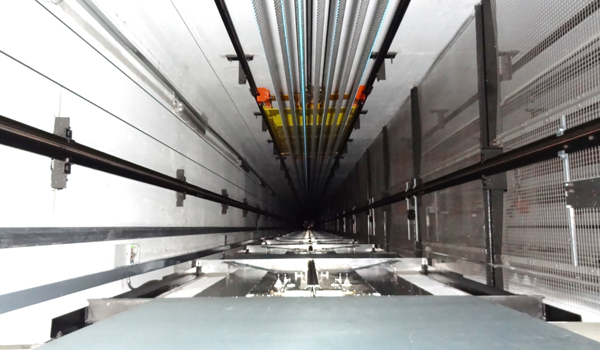
The two main types of lifts that are most commonly used for residential and commercial purposes are Hydraulic and Traction lift. So before making any decision whether to go for Hydraulic or Traction lift one should understand before what Hydraulic and Traction lifts are and their differences.
Difference between Traction and Hydraulic Lifts
Hydraulic Lifts
Hydraulic lifts becomes function able when a hardware pumps allow the flow of hydraulic fluid into the jack. This lift has a cylinder at its base which drives it up. Water driven lifts requires lesser space and are more active with regards to lifting high weights. Hydraulic lifts start working when the plunger moves towards the downward motion and transmits oil to tube holes, hence slowing down the affecting mass. Execution of lifts totally depends on oil dislodging and performance of the buffer depends upon the size and circulation of these openings. Hydraulic elevators don’t cost as much in comparison work to traction.
Traction Lifts
Traction lifts move up and down a pole utilizing ropes and bundles with a stabilizer to adjust the weight load. A traction lift utilizes bundles and links to climb and down the pole. Depending on the sort of traction a stabilizer offsets the load so that the engine does not have to work hard.
Facts to consider when purchasing Hydraulic & Traction lifts:-
- Qualify of the lift
- Design and style
- Number of persons it can accommodate
- Operational cost with respect to maintenance and other requirements
Hydraulic Lift Advantages:-
- Hydraulic lifts take up less amount of space in a building.
- The traction lifts have almost double in its costs compared to hydraulic equipment.
- Expense in equipment and maintenance cost is lower than traction lift
- More effective for high load capacity requirement.
Hydraulic Lift Disadvantages:-
- Hydraulic lift has underground pressure and can invite risks if proper maintenance is not made on time.
- Hydraulic lifts can use effectively rise up to 150 feet per minute. The lifts performance becomes unpredictable if it goes above this level
- The hydraulic elevators don’t have a security device to keep it from falling so it depends on the weight in the framework to keep up its position in the shaftway
- The hydraulic elevator’s motor keeps running in the up direction so its energy consumption is as twice than that of a traction elevator.
- If there is a leakage in the underground system then there is a chance of overflow of oil into the ground and surrounding which will pollute the public water supply.
Traction Lift Advantages:-
- The main advantage of a traction lift is its higher speed compared with the hydraulic variety
- Traction system can be used in tall high rise and modern buildings.
- They also offer smoother and comfortable rides compared to hydraulic.
- The traction system is also more energy efficient
Traction Lift Disadvantages:-
- Installation costs can cost you higher than the hydraulic elevators
- Traction lifts are difficult to maintain, as the control of the machine are placed in the shaft area. This area could be difficult to access.
- Getting spare parts will be a biggest challenge and servicing can only be done by original installer or by the service partner.
- Rescue of passengers during an emergency situation can be a challenge also, because the traction lifts requires special training for functioning and difficult to reach in shaft.
Conclusion
So after comparing Hydraulic and Traction lift both have some advantages and drawbacks too. Therefore, choosing one over the other mainly depends on the choice of an individual and his/her needs. We hope this article on difference between traction and hydraulic lifts helped you to understand the comparison between two.

